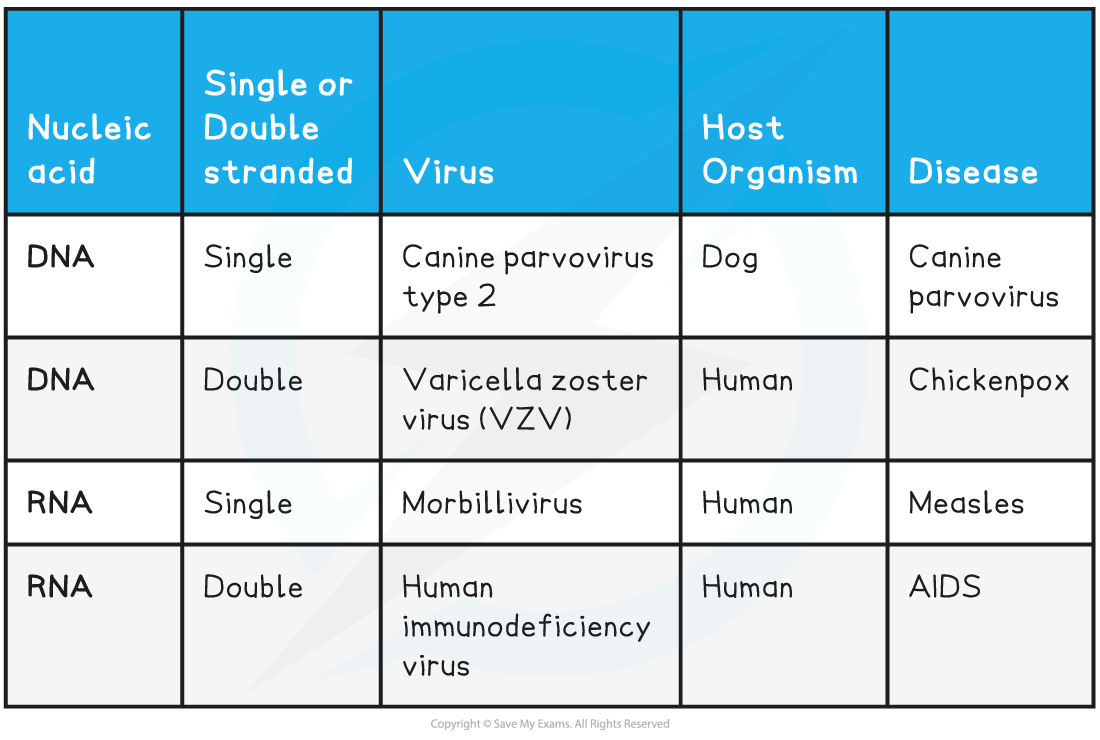- 翰林提供学术活动、国际课程、科研项目一站式留学背景提升服务!
- 400 888 0080
CIE A Level Biology复习笔记18.1.5 Viruses
Viruses
- Viruses are microorganisms that can only be seen using an electron microscope
- They have no cellular structure (and so are acellular and no metabolism
- Viruses hijack the DNA replication machinery in host cells
- The energy viruses need for replication is provided by respiration in the host cell
- Viruses possess none of the characteristic features used for classifying organisms so they sit outside of the three-domain classification system
- There is a wide-ranging debate as to whether viruses should be classified as ‘living’ or ‘non-living’ based on their inability to carry out the defining features of life outside of a host cell
Classifying viruses by their genetic material
- Viruses are classified according to the type of nucleic acid (RNA or DNA) their genome is made from, and whether it is single-stranded or double-stranded
- In cellular organisms like animals and plants, DNA is always double-stranded and RNA is usually always single-stranded
- However, in viruses, DNA and RNA can be either single-stranded or double-stranded
- As a result, there are four groups of viruses that exist:
- DNA single-stranded viruses
- DNA double-stranded viruses
- RNA single-stranded viruses (this is the type of genome of SARS-CoV-2, the virus responsible for the COVID-19 pandemic)
- RNA double-stranded viruses
Classification of viruses table

转载自savemyexams

最新发布
© 2025. All Rights Reserved. 沪ICP备2023009024号-1









